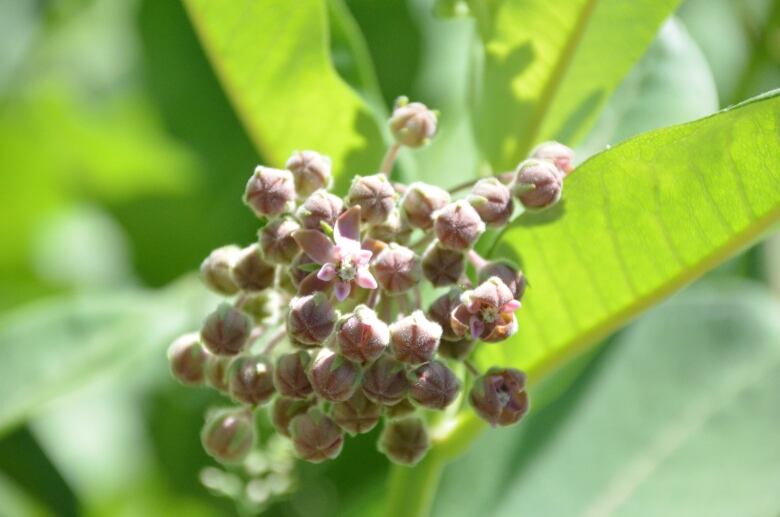Monarch butterfly population set to rise this year
Population numbers are up from the lowest ever recorded in 2013

After a devastating drop in population numbers over the past two years, the monarch butterfly is poised to make a comeback this summer.
The increase is being noticed at Point Pelee National Park in Leamington, Ont., the final Canadian stop of the monarchs' annual journey south.
"We're definitely seeing more monarchs fluttering around the park this year than we did at the same time last year, so that's encouraging for all of us," said park interpreter Sarah Rupert.
Rupert said crews working on the grounds have also found more caterpillars this year as well as male monarchs defending milkweed patches. Rupert called it a positive sign for the butterfly's reproduction. She said last year, not one caterpillar was spotted in the park.
Chip Taylor, director of Monarch Watch, a University of Kansas program focused on monarch conservation, said his research also shows a similar trend.
"It's better than last year, and that I'm happy to say, because last year we had the all-time low population," Taylor said.
Taylor told CBC News the population could rise 30-40 per cent but can't be sure. He also said increases this year won't offset the losses of the last two years.
"Monarchs were lower than they had ever been recorded at the overwintering sites. This year, things should be better not particularly better in Ontario, but we're seeing better production in parts of the Midwest," he said.
Rupert, however, says the situation is improving in Ontario compared to 2013.
"We didn't see our first monarch in the park last year until the beginning of July and typically we see them during the month of May," said Rupert. "We saw them within the first two to three weeks this year, so that's definitely very different from last year."
More milkweed plants could make a difference

Milkweed is the monarch's main food source. Male monarchs attract female butterflies to their milkweed patch, where they mate and the female lays her eggs.
In the past several years there has been a significant decrease in milkweed, which biologists have said is another contributing factor to the drop in monarch population.
"The males with the best patches get the girls," Rupert said.
In 2012, due to an abnormally early and hot spring and summer, the butterflies got too far north, too early, and they dispersed through a lot of places where there wasn't any milkweed, which pushed the population numbers downward, explained Taylor.
The following year, Taylor said, theygot to their breeding range too late, and that delayed the reproductionand reduced the population.
A movement of creating butterfly gardens by planting milkweed or preserving milkweed plants has sprung up in the past couple of years, an initiative which Taylor said could make all the difference.
"It does help. We've lost acres and acres of habitat. So what we've been trying to do since 2005 is get people to create those little habitats because it's one of those Field of Dreams scenarios: If you create it they will find it, and they will use it, and they will raise monarchs in those places," Taylor said. "Every little bit helps."
Migration could be affected by cool weather
Monarchs in Point Pelee National Park should start migration around Sept. 6 and peak in the second week, said Taylor.

"Last year monarchs arrived very late and the population peaked very late in the season and that was the latest migration we've ever seen," said Taylor.
"This year it will not be that late, but it's also the case that the weather in Ontario is predicted to be iffy for butterflies to migrate over the next month and if that's the case it could delay the movement of butterflies out of your province."
He said if severe frost is present during this time it will have an effect on how many monarch will survive.
Taylor said unusually warm Octobers in the U.S. for the past 15 yearshave balanced off delayed migration in some cases.












_(720p).jpg)


 OFFICIAL HD MUSIC VIDEO.jpg)
.jpg)



























































































